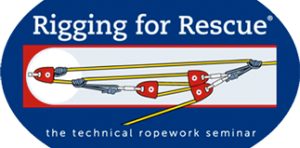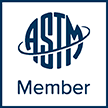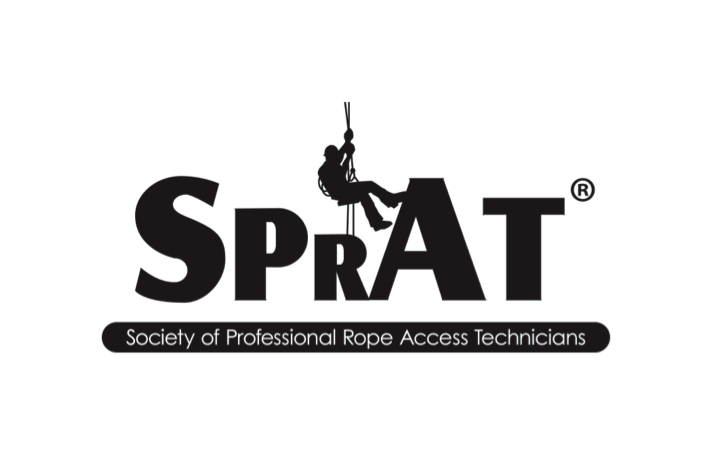Red Mountain Pass – Laying Net
Finally after a challenging week of work, we started laying mesh mats over the talus slopes below the Ruby Walls. It was another day of high pressure. The favorable weather has really made the project achievable. We got in another 9 mats today giving us 17 in total. We could use just ONE MORE good day of weather. We got stood down for wind in the gorge this afternoon and that prevented us from finishing our third row deep of mats. Perhaps tomorrow AM. Kevin and I entertained ourselves during the short wait for the wind to die down by trundling monster boulders down the north chute. Many of them were launching clear over the highway and down towards the Uncompahgre river. The crew has really been looking out for each other. Our spotter on the top, Michael from Silverton, had to egress by rope due to the high winds and no helo pickup. We had supplied him with rope and also had given him the tour of the top of the cliff a few days ago. He spots up top for bigger rockfall and prevents animals from getting over the top of our work area. Michael rappelled the 400 foot wall with aplomb and we made our way down the rope access path together. Another day of injury free work. Let’s keep it up and stay alert!
Ruby Walls rockfall mitigation- Red Mountain Pass
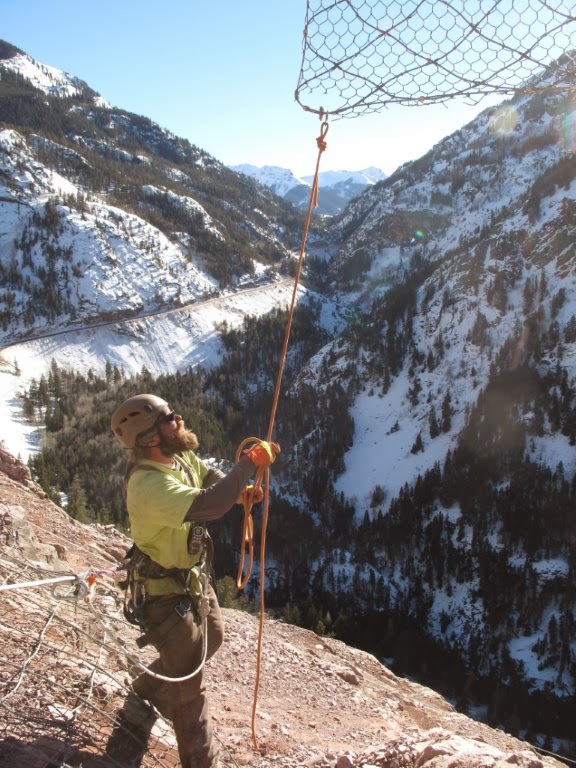
Yesterday, the team psyche was very, very high. We were well positioned to lay down some panels. This was on the heels of a very challenging and pretty hazardous week of scaling rock, drilling anchor holes, and prepping the site. We managed to get 8 of the approximately 40’ish panels draped on the talus field. Everyone did a phenomenal job to help each other be safe and get the work done. The spotters were performing sentry duty for the crew on the slopes with their eagle eyes, unwavering attention to the mass of rock above the us, and quick deployment of the air horns. When you have a 400 foot cliff above you, a blast of an air horn gives you those precious extra seconds to do the ‘Barry Sanders’ and dance around the volleys of rock. Most of the stuff came down between 0930 and 1100. That is very typical of what we have been experiencing. It is one thing to cross under a hazard like the Ruby Walls. It is an entirely different sort of thing to park yourself for hours on end on an anchored rope in that kind of environment. We all felt the sense of relief to extend our anchored ropes downslope for the next row of mats and get away from the base of the wall. You do feel hunted. The pilot and helo crew did a fantastic job of laying those nets in where they needed to be one after another. Projects like this one require a high degree of skill and professionalism to go well and we are fortunate to be operating alongside some very capable practitioners. Today, if all goes well, we should really stitch up that face with panels. We have our systems well rehearsed and now we just need the winds to remain calm. Enjoy the video compilation from the first several days of the project along with some recent images. Remember, safety is no accident! Carlin managing the panel tagline Surveying the scene First unfurled panel on the way Grady on point Kevin and Tim at base of the wall Technical flying by Phillip
Rigging for Rockfall – the Ruby Walls project ; Red Mountain Pass

So there I was last Saturday afternoon having a restful weekend when I get a call. That call changed the complexion of that day and all the days since. And the entire odyssey has been an amazing adventure. Every day brings a new challenge and different set of complex dynamics. The problem solving and risk management is very engaging. On the evening of January 12, the Ruby Walls above highway 550 just south of Ouray, Colorado unleashed a massive spontaneous rockfall. The debris spilled across the highway rendering it unpassable. Rockfall at the Ruby Walls is par for the course, but this particular volley was exceptional in nature. Basically, an entire cliff face about the size of an office building calved off of the wall spilling down to the slopes below. On Saturday, January 18, I got brought into a conference call with the incident management team from CDOT. They were interested in getting one of their top geologist/rockfall specialists safely inserted into the rockfall zone from above. Moving live loads in technical terrain is our specialty, so it seemed like a natural fit. We signed up. The next day, four Rigging for Rescue personnel and the CDOT rockfall specialist were flown in on helicopter to a pretty spectacular one-skid landing on the slope above the main Ruby Walls headwall. We were in the care of the capable hands of Lee (pilot) and Joe (spotter) from Helitrax in Telluride. Lee was steady as a surgeon every time and set us in there just right. Thank you Lee and Joe! The terrain was pretty tricky with snow, ice, and downsloping rock. We constructed anchors, rigged ropes, and after about 2 hours of site prep were ready to lower an RfR rope tech down the wall. Kevin drew the long straw and he got to go down with the scaling bar and send down several massive boulders over the headwall. Does that ever get boring? I doubt it. After the top was properly cleared of objective hazard, Kevin and the CDOT specialist were lowered down the main headwall to the talus slopes below. The lower was 125 meters or about 400 feet. A big wall by anybodys standards. We lowered over the unchanged rock to the north of the newly exfoliated rock. Great, solid rock and very, very steep. Overhanging for a good portion. Steep is good. The rocks from above sail over your head should they dislodge. Bob, the rockfall specialist from CDOT gathered the information he needed and then he and Kevin took a rope and some rigging equipment and descended the relatively moderate terrain to the north of the scar all the way to Highway 550. We packed up gear at the top and took the scenic flight home to Ouray. I kind of thought that might be the end of our job. Little did I know…The info that was gathered by Bob was compelling and now the rockfall mitigation plan was starting to take shape. Our services were retained to set a rope access path up to the debris field from the highway below. We completed this the next day using a top-down strategy. We were flown in as before and then rappelled down the 400 foot face. I drilled a 2-bolt anchor midway down so that we could complete the rappels using shorter ropes. Once at the bottom, we called in for the helicopter sling load and they delivered 500 meters (1800 feet) of rope and rigging material. We started the process from the apron of the wall and followed our noses down the path of least resistance trending well away from the shooting gallery to our south. It took all day and a lot of scaling and rigging to make it safe. But by late afternoon we did our last rappel and had our boots on highway 550. Some of the Yenter company personnel were there to meet us and they were psyched! They had spent some time up high on the wall earlier in the week and felt that it needed a different approach. We were glad to help and proud to link the highway to the work area in a logical and effective manner. Solving puzzles is a lot of fun. Particularly when it involves ropes and rigging. So that was really going to be the end of it for our part…Yeah, right :). One thing lead to another and we were asked to be the rope access and slope safety officers for the scaling, rigging, and rockfall mitigation. We said yes, enthusiastically! Highway 550 over Red Mountain Pass is the recreational and business lifeblood of a few small Western Slope communities including our own in Ouray and we wanted to help. Plus, we were now invested. This rope access path we constructed was our baby and we wanted to manage it and fine tune it. The past week has been an absolute blur. I don’t even know what day it is. All I know is that we have a fantastic team up high on the hill that is gelling and getting some serious work done. I only wish the highway were open so you could see the MASSIVE amount of rock we are scaling off of this face. It is mind boggling. The newness of the geology is fascinating. It is a very unique environment to be able to explore. You can feel the rawness. One tree WAY down the slope is probably around 60+ years old and is still standing strong. However, it has almost no branches. They were raked clean off. Amazing display of energy. Tomorrow we plan to continue to work on drilling the anchor holes for the main cable that will support the drapery panels. Once the cable is securely in place, the helicopter will fly in 46 panels one at a time and those will be attached in-series to the anchored wire rope. These panels will lock in the remaining talus and reduce the rockfall hazard significantly. Thank
Mount Desert Island, Maine

The Rigging for Rescue tour of beautiful training venues on the Atlantic Ocean continued with a visit to Mount Desert Island, Maine. The federal government opened up in the nick of time for us to enjoy a day of training out at Otter Cliffs in Acadia National Park. The geology at Otter Cliffs offers very dramatic 90 degree edge transitions which very much lends itself to a vertically-oriented stretcher. We engaged in some healthy discussions during the classroom sessions addressing the pros/cons of horizontal versus vertical stretcher orientation. The are a number of compelling decision points to consider including the patient injuries and level of responsiveness, rockfall hazard, space limitations to the terrain, difficulty of the edge transition, and other factors. Many of the sites we encountered had features present that warranted a vertically-oriented stretcher in a high angle environment. This is perhaps too often discounted as a viable option due to perceived comfort issues for the patient as well as potential injury exacerbation. There are a number of patient packaging ‘tricks of the trade’ that aid not only in general comfort, but also with patient security, protection of existing injuries, and general safety. The mock patients during this training all weighed in favorably when discussing patient comfort and security in the debriefs. This sentiment is pretty consistent in not only RfR trainings that we conduct, but also in real rescues in which we have participated as volunteers on our own SAR teams. I don’t know if I’ll ever get another run of splitter weather like this past September and October managed to deliver in the North Atlantic. Sea cliffs are a lot more friendly when the rain isn’t coming in sideways. Thanks to MDI SAR for a great week of training!!
Self Rescue and Small Team Workshop

We recently hosted the Self Rescue and Small Team Response Workshop at our base of operations in Ouray, Colorado. This was the second time ever that we have offered this training on an open enrollment basis. The participant mix was a diverse group consisting of previous RfR attendees as well as some folks new to our training programs; there were firefighters, climbers, and NPS climbing rangers in attendance. Just like any Rigging for Rescue seminar, we conducted a thorough interview process at the outset in order to gather as much information as possible as to what the participants expected and wished to see included in the workshop curriculum. It came as no surprise that the topics and techniques covered in this years workshop deviated appreciably from what was covered in the 2012 workshop. At Rigging for Rescue, it is our unyielding belief that adult education in a technical subject matter needs to be conducted in such a manner that there is flexibility in the curriculum, an inquiry-based methodology to the approach, and plenty of hands-on opportunities. The workshop followed a progression of: 1. Be able to manage yourself in a high angle environment (ascend; descend) 2. Be able to rescue your partner in a climbing scenario (rescue the second and the leader) 3. Be able to operate in a team-based approach with a minimum of personnel The initial field scenarios focused on simple belay escapes and transfers of tension. We then progressed into more complex scenarios involving partner rescue in a variety of settings. The highlight came towards the end of the week with the rescue of a leader fall followed by a multi-pitch egress using team-based rescue tactics. During the final workshop debrief, two of the participants offered that it was the “best course ever” and another weighed in that if you venture into back-country multi-pitch terrain, it should be mandatory to take a class like this one and possess the requisite skills for partner rescue in a climbing scenario. Below are some photos of our multi-pitch exercise on a spectacular autumn day in the San Juan Mountains near Ouray, Colorado. Seconding in multi-pitch terrain Leading Rescue the Leader with counter-balance rappel Ouray, Colorado Station management in multi-pitch terrain
Westman Islands, Iceland

The high pressure in the North Atlantic continued unabated for another RfR seminar. This one was hosted by Ice Sar and held in Vestmannaeyjar (aka Westman Islands) off the SW coast of Iceland. The training sites were abundant and diverse. Exercises included stretcher work, pickoffs, specialty techniques like the Pike ‘n Pivot, a long Guiding Line, and a multi-pitch steep slope evacuation. The anchoring in Iceland is often unique and somewhat improvised. To contend with the sub-optimal rock quality and a lack of sizable vegetation anchors – btw, as the local advice goes, if you get lost in an Icelandic forest, just stand up – rescue teams have devised a variety of anchoring methods and tools including ground stakes and angled aluminum wedges for pounding into the turf. Get enough of anything and you can improvise a solid anchor. On one of our raising scenarios, the lines were ‘trenching’ into the turf due to a low mainline focal point and some convex terrain between that focal point and the edge. Fighting all of that extra friction made it very difficult to raise the load back up. Additionally, advancing the Prusik rope grab for the next raise became a real chore. It reminded me of some of the same challenges in a crevasse rescue scenario when your lines cut into the snow/ice. I showed them a simple and effective solution which was to move a large stone to the top of the convex roll and anchor some edge protection on top of the stone (see image below). This caused the ropes to ‘float’ and alleviated the suffering on the mainline haul team. Use of a boulder high directional Fore!! Playing through… 165m Guiding Line Pickoffs Difficult edge transitions Icelandic high directional Scenic spot for training Pike ‘n Pivot The Westmans
Faroe Islands – Rigging for Rescue Seminar

What a fantastic experience I recently had conducting an RfR training on the Faroe Islands in the North Atlantic. The Faroes are located pretty well equidistant between Iceland and Scotland. I was anticipating ‘full battle conditions’ with the weather, but it turned out to be an incredibly benign week with almost no wind, sunny skies, and mild temps. Quite a treat. Over the past 12 months, the SAR team there has taken on the supreme challenge of founding a new team from scratch, acquiring equipment, training, and dedicated team members. They were fortunate to get some good guidance from their neighbors at ICE-SAR in Iceland. However, most of the credit goes to them and their commitment to the task at hand. Hosting a Rigging for Rescue seminar was treated internally as their team graduation week. They had the training scheduled nearly 9 months ago. They now feel skilled and confident in their rope rescue proficiency and in short order will be added to the emergency dispatch system in the Faroes. It was an empowering week for the team members and we at RfR felt honored to play a small role in their ongoing education in the craft of technical rescue. The week wrapped up with a great party hosted in the galley of a large sailing vessel moored in the harbor of the capital city of Torshavn. What better way to wrap up a week of training than a party on a boat complete with Irish folk songs? Rescue raises on a scenic sea cliff Looks like a PMP, but is actually a GEP (Grass Eating Pulley) Nice scenery for training if you have the weather Hang loose Hawai’i? No, the Faroes! Slope work Kootenay Highline System Comparing/contrasting vertical vs. horizontal litter orientation
Update & Beyond in Ouray
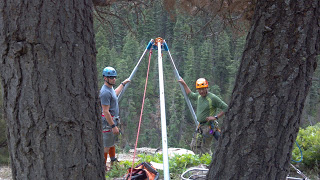
Last week we hosted a Rigging for Rescue ‘Update & Beyond’ Seminar, open to previous Rigging for Rescue seminar participants. As usual, we had a great crew and beautiful weather, and we capitalized on both to accomplish some fantastic field exercises. We also had the pleasure of hosting three international participants: two from the Ontario Provincial Police and one from the Khumbu Climbing Center in Nepal. Thanks for making the trip to Ouray!
Rigging for Rescue in South Africa
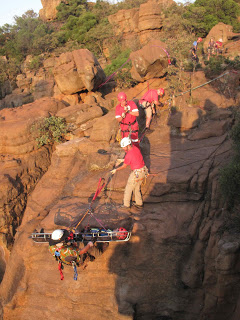
We recently wrapped up a rope rescue training workshop in the Gauteng province of South Africa. We had conducted a similar Rigging for Rescue program down in Cape Town in 2010. One of the participants from that workshop, Rob Thomas, runs a mountain guiding and rescue training company called the School for Mountain Leadership here in South Africa. We had approached him many months ago about the possibility of doing a workshop while we were in-country and he enthusiastically agreed to make the arrangements. Our training session was based in the Magaliesberg Mountains north of Joburg. The Magaliesberg is an ancient mountain range with beautiful, hard quartzite rock. The rock climbing, by the way, is superb! The workshop consisted of 12 participants from various rescue agencies around the country. It was a keen group and we had a terrific week of training. Rob put the Gibbs Family up in a nice log cabin near the training site. We used the cabin as the classroom facility and also the group mess hall. It was awesome to be able to train and socialize with the South African participants. Whenever we conduct an RfR training abroad there are opportunities to gain insights into risk management preferences, decision making methodology, and of course equipment and technique differences. As Rob said during the workshop, “if you are not learning, you are not growing.” Well said. Thanks again for a memorable week!
New Course Offering!
Finding Balance: Patient Care in Technical Rescue A specialized 3-day intensive workshop for previous RfR participants focusing on: a critical thinking approach to effective leadership, size-up, teamwork, and putting it all together in a technical rescue as it pertains to patient care and evacuation finding balance in efficiently meshing the medical aspects of patient care and the movement of the patient in technical terrain This hands-on interactive workshop is tailored for medical/rescuers tasked with the patient access, care, and evacuation components of a given rescue in technical terrain. As we all know, an often overlooked aspect of rope rescue training is giving participants an opportunity to efficiently find balance with the medical aspects of a given patient care scenario and the actual movement of that patient in difficult terrain. Through thoughtful discussion, pertinent case studies, and hands-on application we will explore a variety of realistic patient care challenges in difficult terrain. We will then combine that with safely moving the patient, as a team, in the mountain rescue environment. CEs will be available. Workshop participants can count on exploring a wide variety of topics and techniques including: the importance of exemplary patient assessment skills for the medical/rescuer patient care considerations in a variety of scenarios in the difficult terrain environment patient securing and packaging considerations in a variety of settings and scenarios efficient use of medical /rescue equipment and personnel in a given technical rescue recognition of what interventions “really make a difference” for most patients in difficult terrain rescues stretcher orientation and attending considerations medical kits / new equipment BLS/ALS considerations and limitations in technical rescue pain management and medication delivery options safely improvising and adapting in patient care and rescue a reinforcement of safe, timely and efficient rope rescue techniques and principles utilized in moving the patient in both steep and high angle settings safe helicopter interface The above list is not exhaustive, nor is it a checklist. While we provide a curriculum, the techniques, equipment, and personal experiences that you and your team bring make this and every Rigging for Rescue workshop or seminar a custom experience. All field training scenarios will be in and around Ouray, Colorado. Secure your place early as this workshop will fill quickly! Dates: August 30-September 1, 2013 Course fee: $600 This course is only available to previous Rigging for Rescue participants
